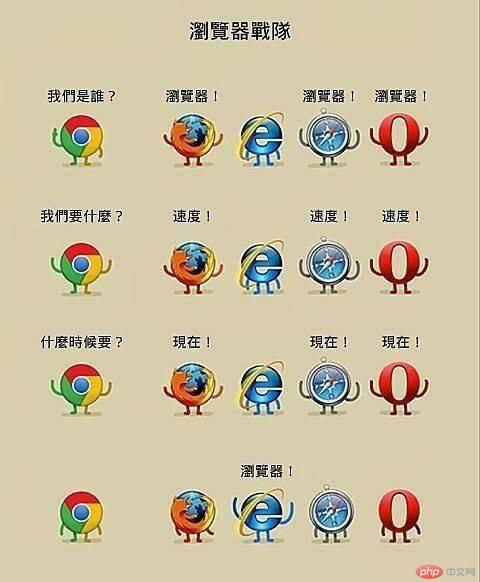Home >Web Front-end >Bootstrap Tutorial >Web development milestone moment: Bootstrap announced that it will abandon support for IE
Bootstrap recently officially announced that it will remove support for the IE browser in version 5.0. The founder said that developers who need to satisfy IE users can continue to use version 4.0.
Bootstrap may be the first mainstream framework to announce that it will abandon support for IE. Will this be a milestone in the field of front-end development?
Bootstrap 5.0 will give up support for IE
The popular open source front-end framework Bootstrap recently announced that it will give up support for the IE browser.
Bootstrap was originally written by the Twitter team, formerly known as Twitter Blueprint, with the intention of producing a set of tools and frameworks that can maintain consistency. Before Bootstrap, developing interfaces required using different code libraries, which could easily lead to inconsistencies and increase the burden of maintenance.
It is understood that more than 20% of the world’s websites use the Bootstrap framework, and the current stable version supports mainstream browsers such as Chrome, Firefox, IE, Opera and Safari. But the team has officially announced that support for IE will be officially removed in version 5.0, which is expected to be released later this year.
Mark Otto, one of the founders of Bootstrap, said on GitHub that developers who still need to satisfy IE users should continue to run Bootstrap 4 instead of upgrading to the upcoming v5 version .
Under the issue discussing the removal of IE support, you can clearly see that the emoji distribution shows overwhelming positive support, and in the comment area below , and there were very few comments expressing opposition (the few of them were criticized).
But Bootstrap’s move may also bring some side effects. As a popular open source front-end framework, it is also the basic module of many other web development tools and enterprise website building solutions. Once you choose to upgrade, they will automatically lose IE. support.
Front-end suffers from IE. Some people think that Bootstrap's announcement to abandon IE support is a landmark event. Bootstrap occupies a large share of Internet sites, and its every move is destined to be watched by the industry. Currently, there is no mainstream framework of the same type that has made similar decisions. For example, jQuery, the JavaScript library that accounts for almost 75% of sites, still supports IE 9.
Bootstrap has become the first mainstream framework to abandon IE support. Perhaps this begins to indicate that web developers can escape the suffering of IE. Data shows that the IE browser's share of websites is currently only about 1%, but many websites and bank websites are still only compatible with the IE browser, which brings huge troubles to Web development: one year of IE development can Gain three years of work experience.
In the article "Top Ten Nightmares of Web Developers" compiled by InfoQ, it is mentioned that support for IE 6 is a nightmare experience:
Developers spend a lot of money on IE6 code It can take three times or more than Chrome or Firefox. What's even more frustrating is that the website won't run as smoothly in IE6 as it does in the new browser. Some effects don't work, some bugs will always bother you, not to mention those security issues. This makes the developer's job very difficult. If I had any advice, I'd suggest charging double or more for projects that want to support IE6, but even then, it's still not worth it.
Previously, the popular open source component library Ant Design released version 4.0. The author also communicated with its core author about the problems of IE support:
In order to be compatible with the old version of IE, the v3 version had to make some compromises. For example, if flex layout cannot be used, we use float and table; sticky cannot be used, and Table has to render an additional Table to achieve the effect of fixed columns. The difficulty in being compatible with IE is that many behaviors are unexpected. Often there is no problem with the code, but the page rendering is abnormal. For this situation, a lot of black technology needs to be done. For example, forcing components to refresh, using IE-only css hacks, etc. In addition, many of the new HTML features mentioned earlier cannot be used in the IE environment, and can only be simulated by yourself, resulting in serious performance loss.
In addition to developers, complaints from users are also hilarious, such as this widely circulated satirical cartoon:

At the end of the story, Microsoft I couldn't bear to see the IE browser, my biological son that I couldn't support, so I started practicing a new account again - Edge. But this new account also failed to satisfy Microsoft. At a previous public event, Microsoft engineers experienced multiple browser crashes when using Edge, and had to install Chrome at the event to complete the demonstration.
After all of this, Microsoft finally decided at the end of December 2018 that the new Edge would use Chromium, and browser *** finally formed a virtual unification of the world.
Some people say that Chrome’s dominance of the world caters to the strong demand for standardization of web development. Some people also say that Chrome has become the gateway to the Internet and has formed a substantial monopoly that is worrying. What do front-end students think of this?
Recommended: bootstrap tutorial
The above is the detailed content of Web development milestone moment: Bootstrap announced that it will abandon support for IE. For more information, please follow other related articles on the PHP Chinese website!